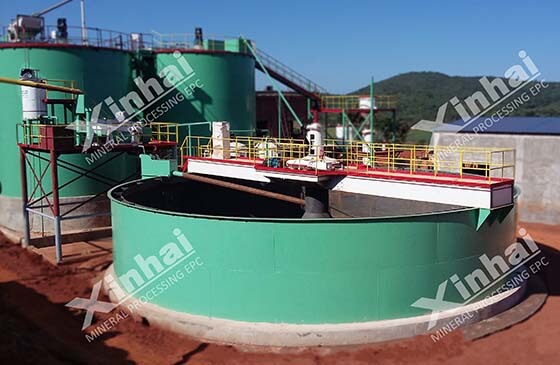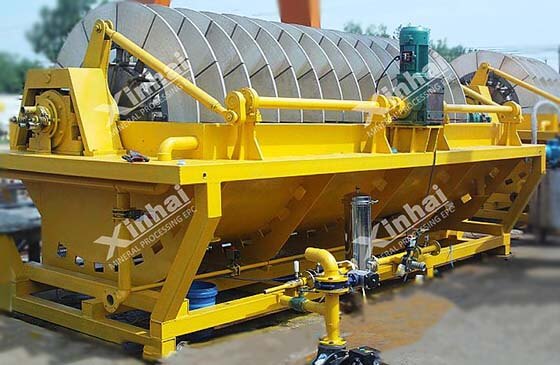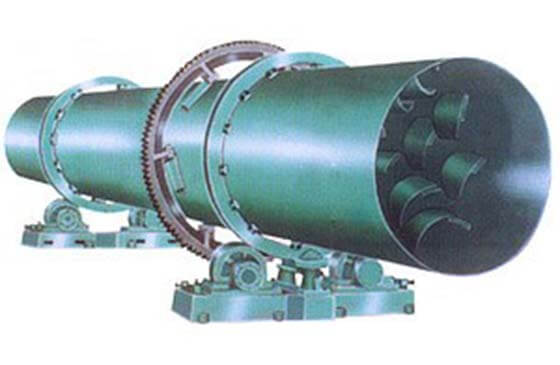

Warm Tip: If you want to know more details about equipment, solutions, etc, please click the button below for free consultation, or leave your requirements!
In wet beneficiation, it is necessary to dehydrate the concentrate and dry the tailings. The commonly used equipment for dewatering mainly includes thickening equipment, filtering equipment and drying equipment. Below we will give a brief introduction to these dewatering machines so that you can choose suitable equipment for your own plant
Thickening refers to the dewatering process in which the mineral particles are precipitated from the pulp by their own gravity, which is carried out in the thickener.
The thickener is a circular tank, mainly composed of a circular thickening tank and a rake scraper.
The solid particles suspended in the slurry in the thickening tank settle under the action of gravity, and the upper part becomes clarified water, so that the solid and liquid can be separated. The sludge deposited on the bottom of the thickening tank is continuously scraped and collected by the rake scraper to the center of the bottom of the tank and is discharged from the discharge port. The clarified water overflows from the upper edge of the thickening tank.
The advantages of the thickener are simple structure, easy operation, low power consumption, and high technical indicators. The disadvantage is that it occupies a large area and is not suitable for concentrating materials larger than 0.3 mm, otherwise it is easy to block.
The feed concentration for thickening operation is about 20% to 30%, and the underflow concentration can reach 50% to 70%.
Commonly used thickening equipment includes peripheral transmission thickener and central transmission thickener.

Central Transmission Thickener

Lateral Side of Thickener
Filtration refers to the process of separating the solid phase and the liquid phase of the slurry on a porous filter medium (such as filter cloth). The task of filtration is to remove most of the capillary moisture in the material. Therefore, it must use a certain external force.
The filter medium is a porous material. Mineral processing plants often use filter cloth as filter media. The small holes in the filter medium are called filter holes. The size of the filter holes can be several times larger than the diameter of the solid particles.
Since the solid particles can form an arched structure on the filter hole, the solid particles will not penetrate through the filter hole, and the water can flow through smoothly.
In production practice, it is very important to choose an economical and durable filter cloth suitable for the nature of the material through tests.
The filtration rate is the flow rate of the filtrate that passes through the filtration area of 1 square meter per unit time. It is related to many factors. The most important of these is the pressure difference between the two sides of the filter medium.
The feed concentration of the filtering operation is 50%-70%, and it can reach 80-90% after filtering.
Commonly used filtration equipment includes vacuum filters, ceramic filters, press filter and so on.

Ceramic Filter

Vacuum Filter
Drying is an operation that uses heat energy to evaporate the water in the solid material. Drying can remove the capillary moisture, film moisture and part of the hygroscopic moisture remaining in the material, which is the most thorough dehydration method.
In the three-stage dehydration process of the dressing plant, the drying operation consumes a lot of fuel and power, and the cost is the highest. At the same time, the drying process wears equipment a lot. Therefore, the drying operation is generally only used when the moisture of the filtered concentrate does not meet the specified standards, or the user has special requirements for the moisture of the product.
When drying, the heating method of the material includes direct heating method and indirect heating method.
Direct heating means that the heated gas serves both as a heating medium and as a drying medium. When the heating gas is in direct contact with the drying material, it not only transfers heat to the material, but also takes away the vapor evaporated from the material.
Indirect heating means that the hot gas as a heating medium does not directly contact the material. The heat is transferred to the object by the heat conduction of the wall, and the vapor evaporated from the material is driven by another gas as the medium.
Because of the high efficiency of the direct heating method, it is often used in the industry. The indirect heating method has low efficiency and complicated equipment, so it is only used when processing particularly rare concentrates.
The most commonly used heating method in metal concentrators is a parallel-flow direct heating drum dryer.

Drying Machine
The above are the three most commonly used dewatering equipment in beneficiation. They have a good effect on the dewatering of concentrates and tailings. In actual production, you can choose the dewatering process suitable for your beneficiation plant according to your own beneficiation process and water content requirements to achieve the highest economic benefits.
If you have any questions about the content of this article, or want to design a dehydration process or purchase dehydration equipment, please contact the online customer service to communicate, or leave a message on the website, we will talk to you in detail as soon as possible.
